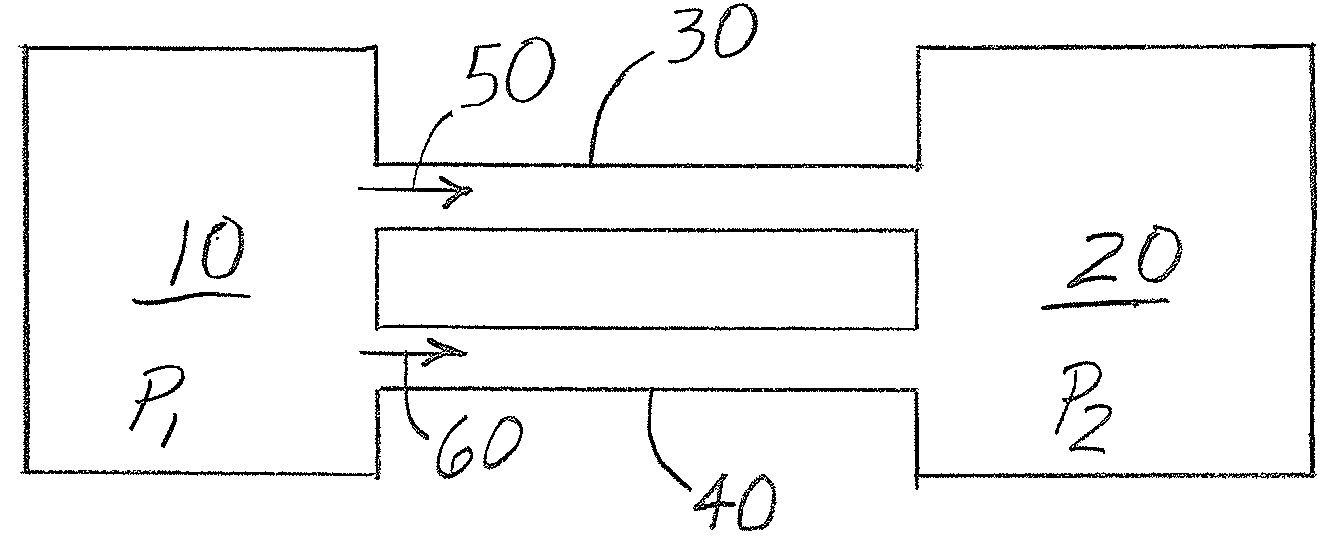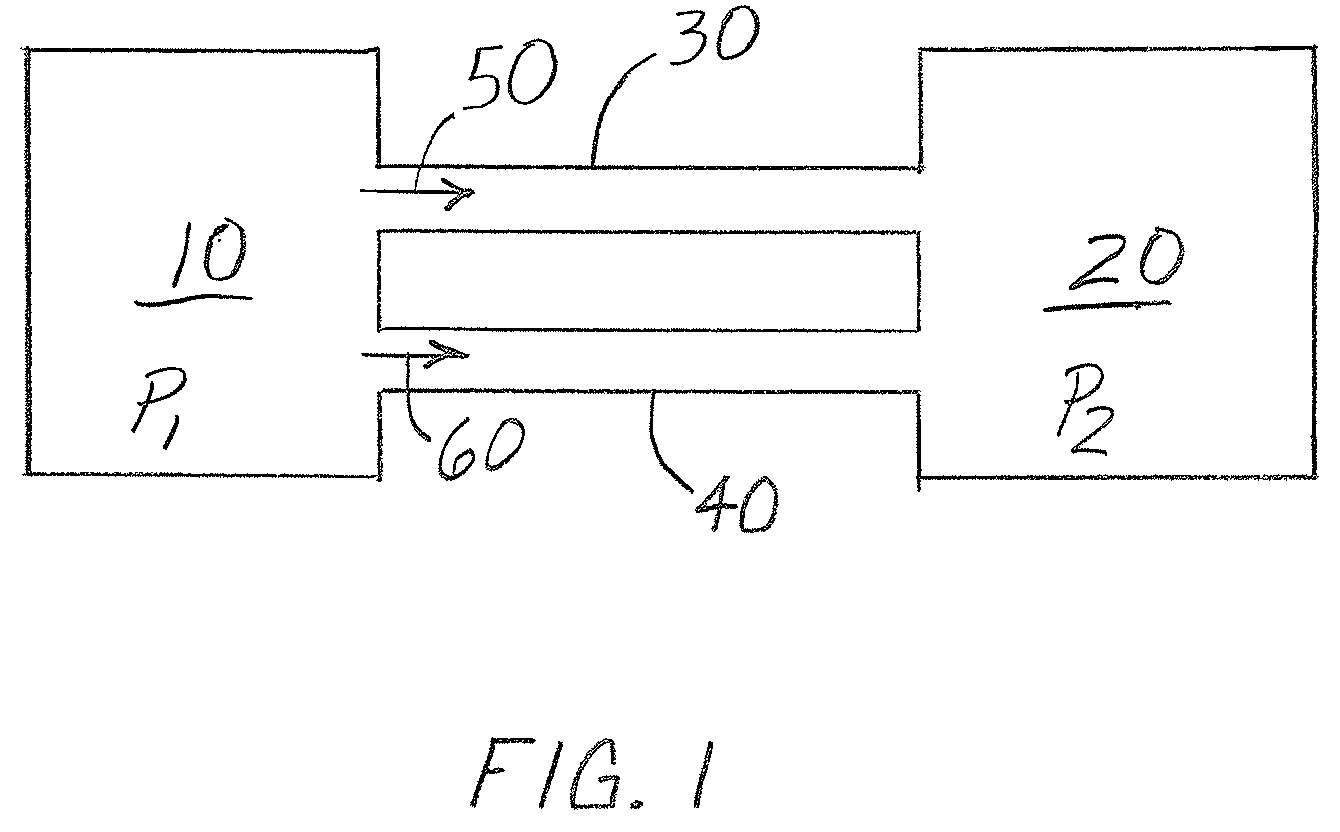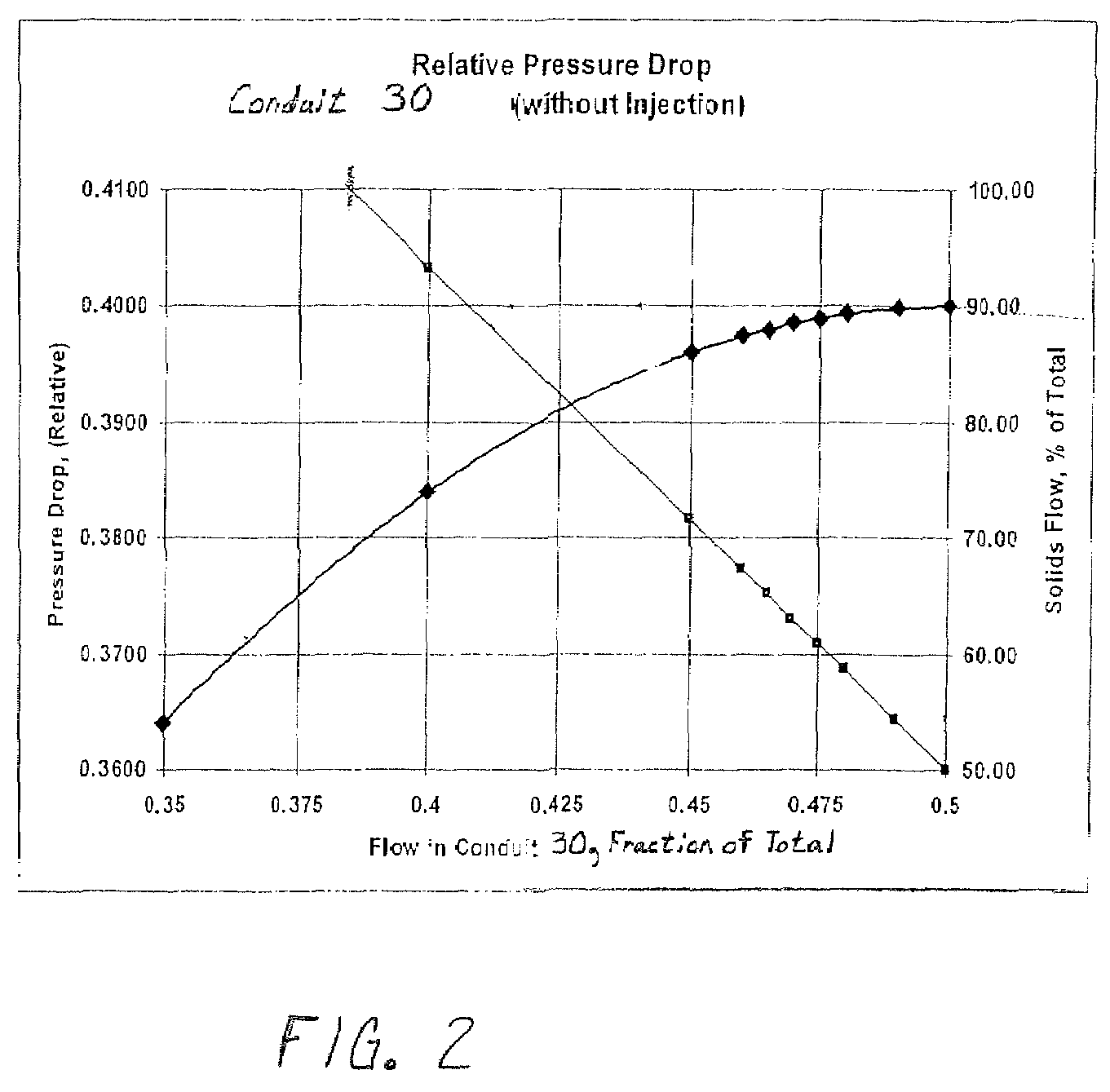Pneumatic uneven flow factoring for particulate matter distribution system
a technology of pneumatic and uneven flow factoring, applied in the direction of bulk conveyors, conveyors, transportation and packaging, etc., can solve the problems of reducing the life cycle of tube materials, imbalances that can produce significant variations, and adverse environmental consequences, so as to achieve the effect of reducing the effectiveness or efficiency of the process and not further compromising the effect of the process
- Summary
- Abstract
- Description
- Claims
- Application Information
AI Technical Summary
Benefits of technology
Problems solved by technology
Method used
Image
Examples
Embodiment Construction
[0021]The present invention applies to a system and method for substantially balancing or equalizing the mass flow of fine solids or finely rendered particulate matter conveyed along two or more conduits by pressurized fluid. Each conduit extends from a common first position to a second position, the conduits defining separate pathways each having substantially equal pressure reductions between the first and second positions. It is to be understood that the size of particulate matter can vary, so long as the particulate matter is entrained(able) in the flow of the pressurized fluid, or at least is controllably movable within the conduits by the pressurized fluid. In one embodiment, the pressurized fluid for use in the system and method of the present invention is a gas, although it is possible for a proportion of the pressurized fluid to be a vapor.
[0022]It is to be understood that the terms solids, including the subscripted “s” for certain terms to be discussed below, and particula...
PUM
 Login to View More
Login to View More Abstract
Description
Claims
Application Information
 Login to View More
Login to View More - R&D
- Intellectual Property
- Life Sciences
- Materials
- Tech Scout
- Unparalleled Data Quality
- Higher Quality Content
- 60% Fewer Hallucinations
Browse by: Latest US Patents, China's latest patents, Technical Efficacy Thesaurus, Application Domain, Technology Topic, Popular Technical Reports.
© 2025 PatSnap. All rights reserved.Legal|Privacy policy|Modern Slavery Act Transparency Statement|Sitemap|About US| Contact US: help@patsnap.com



